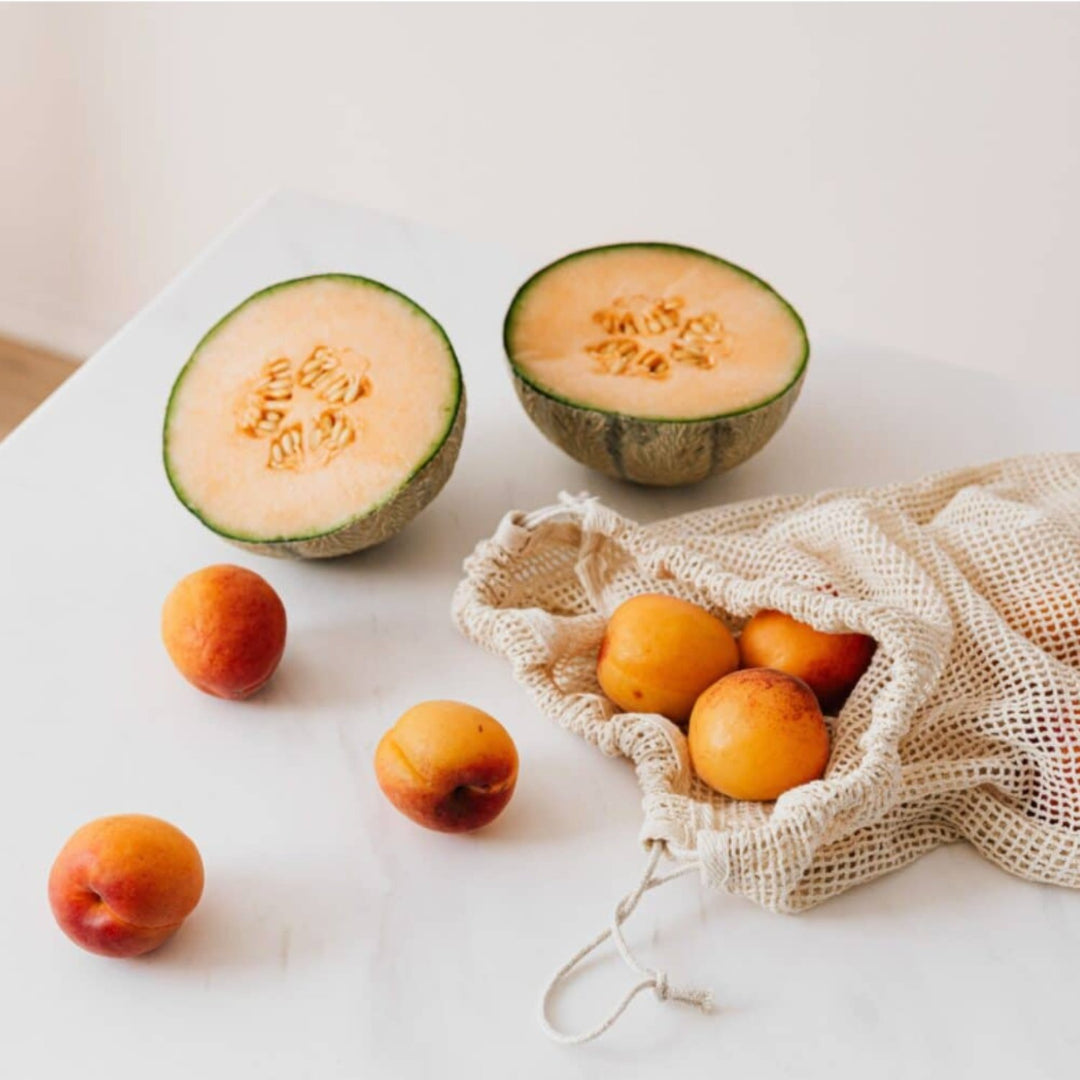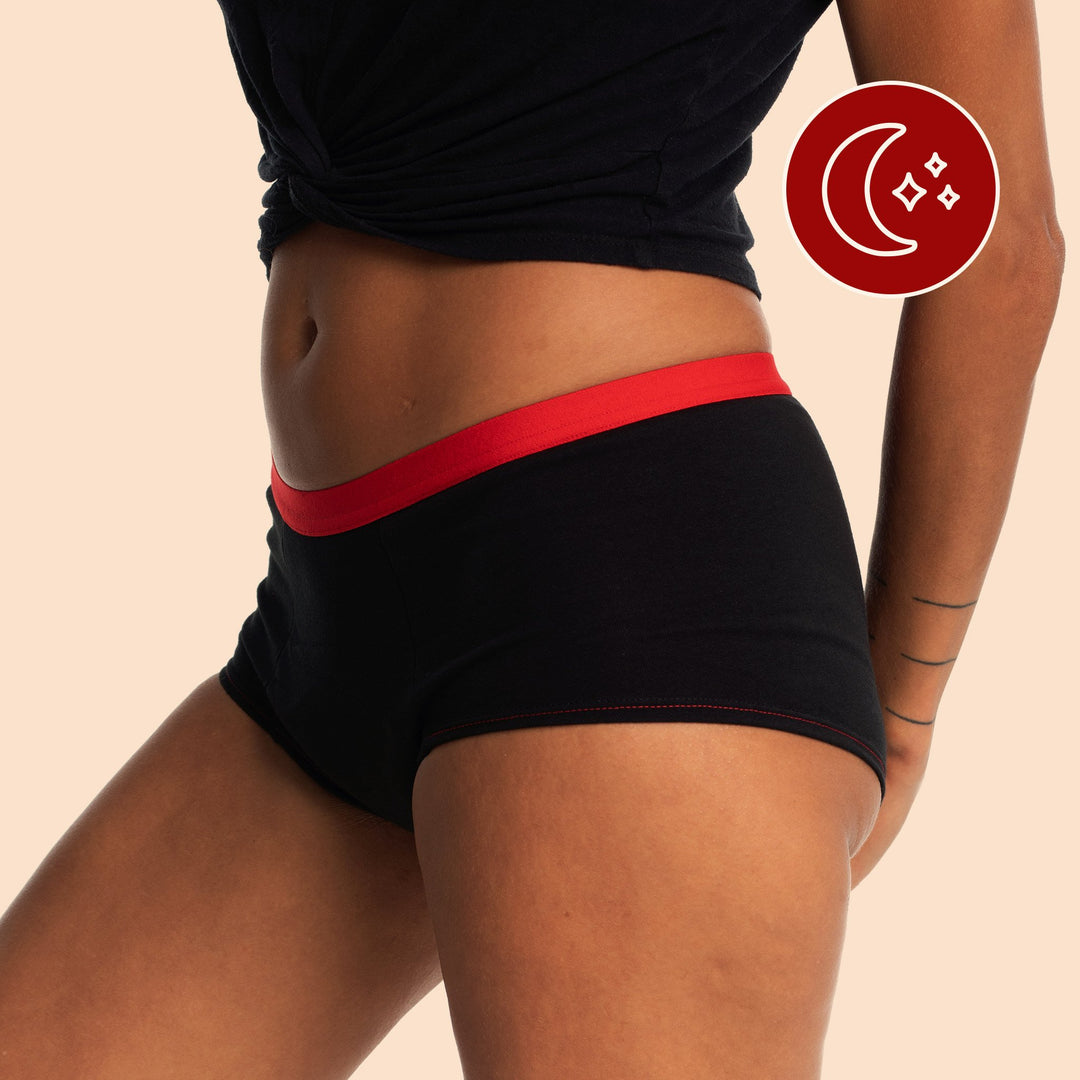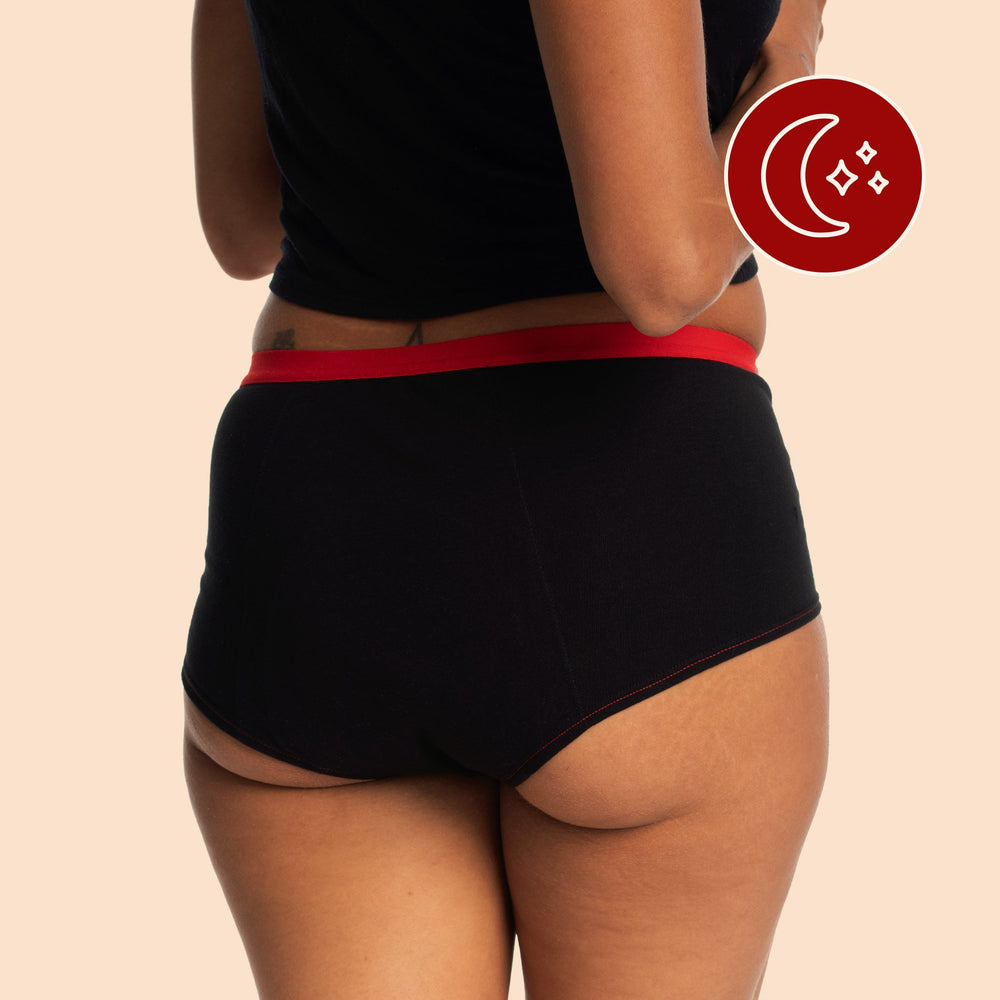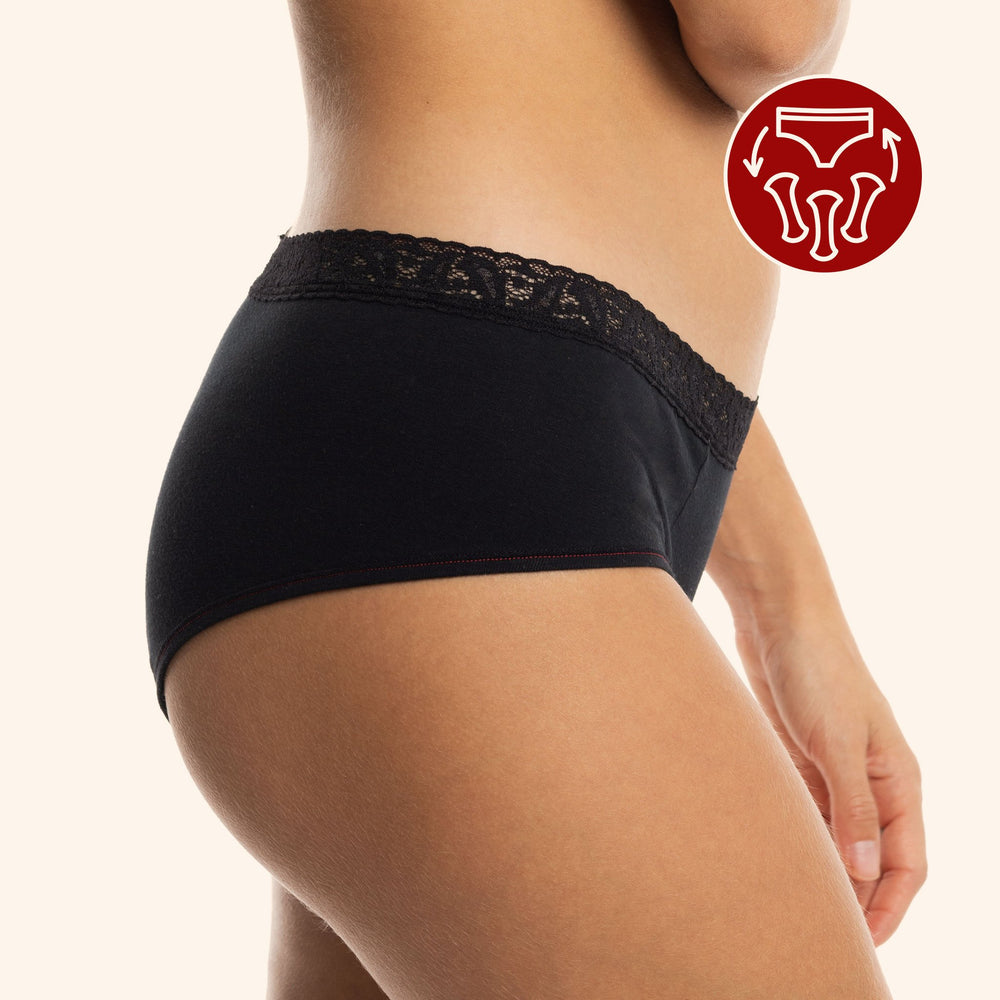
The infamous premenstrual syndrome . . . Many of us go through this phase of our cycle with a lot of difficulty, whether that's because of physical symptoms (cramps, exhaustion, etc.) or emotional effects (depression, stress, irritability). Let me guess, you know exactly what we mean?
Sarah-Maria shared a few tricks known to plant sorceresses to help us soothe difficult symptoms with natural strategies. And we're telling you, you guys are going to fall in love with the superpowers of PMS!
"Premenstrual syndrome": A patriarchal term that does more harm than good
The problem isn't the premenstrual phase itself, it's the patriarchal world in which we live.
When we talk about syndromes, we're basically talking about medical conditions (irritable bowel syndrome, for example). And that underscores the idea that there's something pathological about the premenstrual phrase of our cycles.
That's not to say that premenstrual phase is always a great joy. We experience discomfort and sensitivities, and sometimes we can really suffer quite a bit. We're not trying to minimize the experiences of people who struggle during this time of the month. But the first step to making things better is changing our vocabulary and perception.
Here's the idea we're proposing: instead of talking about "premenstrual syndrome," let's talk about "premenstrual exacerbation" (PME??). Here, "exacerbation" means "intensification"; the premenstrual phase is a time when our hormone levels intensify. Using this feminist framing, we step outside the realm of medical problems and use words that suggest our hormones are just doing their jobs. We're not unwell.
Hormones: What exactly is going on in our bodies?
Estrogen and progesterone are the hormones that affect our bodies most during our cycle. And of course, everyone is different -- we don't all have the same hormone chart.
Here's how these two hormones work, roughly speaking.
Estrogen: The party hormone
Estrogen stimulates the central nervous system. It gets us going, jazzes us up, and makes our eyes shine. In short, we love it!
During the first phase of our cycle -- the so-called follicular phase (from the beginning of our period until ovulation) -- estrogen is riding high, and it's party time!
Then BAM! As soon as you ovulate (around day 14), it drops drastically (or should we say dramatically!). Then it goes up a little during the luteal phase, only to drop again before menstruation.
Progesterone: The sensible hormone
Progesterone is usually more of a downer. It's the hormone that makes us want to rip the head off anyone who dares to play a joke on us (oops, guilty!). But keep reading, and you'll see that it can also make for a pretty great gift.
During the follicular phase, progesterone is almost totally absent. After ovulation, though, it comes out in droves. The premenstrual phase is pretty much an era of progesterone.
You've probably noticed that "progesterone" sounds like "pro-gestation," and that's no accident! It wants to promote life. Thanks to symptothermy, we know that our body temperature rises from ovulation, and you know who to blame. While estrogen builds the frame of the baby's house, progesterone increases the heating (it wants life to be comfy -- how thoughtful!).
Another fun fact: it is a compost hormone. When the oocyte is released from the ovary, the little cloak that surrounds it shrivels up, becomes the corpus luteum, and then makes progesterone. In short, progesterone helps to compost! It intensifies things so that they can be transformed. Biologically, we are composting the little coat, and while we're at it, let's compost some of the patriarchy's useless old framings as well! Thank you, progesterone!
Physical symptoms
You can probably recognize a lot of symptoms related to the decrease in oestrogen and increase in progesterone.
It should be noted that everyone reacts differently: some people are sensitive to progesterone, others to estrogen, and others to everything.
- Bloating or pain in the lower abdomen
- Sore breasts
- Water retention and weight gain
- Insatiable appetite
- Headaches
Emotional symptoms
- Mood swings
- Irritability
- Anxiety
- Fatigue
- Depression
- Reduced interest in socializing (which is totally normal, by the way!)
Progesterone exacerbates things. "If something has been wrong for a while, progesterone will take the file that's on the bottom of the pile and put it on top with a big red flashing neon sign so you have no choice but to see it." - Sarah-Maria LeBlanc
Remember that you don't have the estrogen to hide your emotions, so it's normal to feel more sensitive. In fact, it's even a superpower.
The superpowers of the premenstrual phase
Putting a finger on our unmet needs
The premenstrual phase is an ally. It is an opportunity to dive inside ourselves. We go down into our basement, with our flashlight, and we look at our shadows, our unmet needs.
Does your partner help you enough with household chores? Are you getting enough time to yourself? Could you use a hug? In short, progesterone can make us more sensitive which isn't necessarily a bad thing! We get see what we've been hiding and do a little work on ourselves.
Remember that nothing fatal is going on. Your hormones are just exaggerating what's there so you can get a better look.
Pssst! It can be hard to take some time and reflect. Life just doesn't really encourage that type of thing. We live in a world of estrogen and testosterone, performance and extroversion. But you have the right to slow down and give yourself some time for introspection.
Welcoming our insights
The premenstrual phase makes us more sensitive to the invisible, to our dreams. When we open up to our sensitivity, we meet our visionary priestess, the one who looks inward and collects visions.
This is the time to cultivate your plans for the future and get rooted in your intentions. Trust your intuition!

How to support yourself during this phase
Learn to set limits and put yourself first
This is a good time to put your fomo (fear of missing out) aside! In other words, learn to say no.
Follow your cycle
By keeping track of the various phases of your cycle (in a Period Diary, for example), you'll be able to pinpoint when your premenstrual phase kicks in, and that'll help you make a schedule. We've all overbooked ourselves during our ovulation and regretted it during our premenstruation and menstruation.
Rest
Sleep impacts the intensity of premenstrual discomforts, so why not go outside for just 10 minutes a day to get more melatonin so you can sleep better?
Drink water
Here's your cue to go get a huge glass of water. It'll make all the difference!
Get lots of exercise
Exercise helps you sleep, reduces bloating, and has beneficial impacts on your mood thanks to all the endorphins it produces. Yoga, walking, and any other kind of movement will help!
Eat well
People say you are what you eat, and that's especially true during PME!
Here are some foods you can prioritize to stabilize yourself: squash, sweet potatoes, ginger, whole grains.
It's also important to protect your liver. It metabolizes hormones and works overtime during PME! You might feel like eating poutine and drinking wine, but trust us, you should be eating as healthily as you can.
Take supplements
- Vitamin D: 4,000 iu per day
- B vitamins (especially B6): 50 mg
- Omega 3: 1,000 mg
- Magnesium: 300 mg
- Probiotics
- I3C (estrogen detox)
Plant medicines
Here are some plant medicines that work especially well during PME. You can take them either:
- as a herbal tea, which allows you to ritualize the moment (1 teaspoon per cup, leave to infuse for 5 to 15 minutes, approximately 3-4 cups per day);
- or as a mother tincture (between 1 and 2 mL, once or twice a day).
Taming a plant is like taming a new friend. The effect will be more effective over a longer period. In general, after 3 months, you'll know how well you're getting along. 😉
Yarrow: The star plant
This plant if perfect for restoring your hormonal balance and soften your PME.
More poetically, this plant is known as a star that wanted to visit Earth. Its mother, the Moon, gave it one condition, which was that it had to come back before sunrise. But when the sun came up, the star found it so beautiful that she decided to take root. She's now a flower star, illuminating us from within.
Instructions:
- Take from ovulation to menstruation (or throughout the month)
- Use the flowering tops
Properties:
- Bitter: helps the liver detoxify estrogen
- Progesteronic: perfect if you have increased sensitivity to estrogen
- Hemostatic: reduces bleeding (it's also a smart plant, so if your bleeding is too light, it'll increase it a bit)
- Protective: energetically protects you and helps you preserve your energies
Skullcap: That which calms the mind
To calm mental agitation, anxiety, and strong emotions.
Instructions:
- More effective fresh (in tincture; e.g., Clef des Champs)
- Effects can be felt after about 2 weeks
- In rare cases, it can have a sedative effect in large doses
Properties:
- Nervin: calms the nerves
- Anxiolytic: brings things down to Earth
Lemon balm: The accomplice!
Having a cup of lemon balm is like having a beer!
Instructions:
- Delicious in herbal tea, tastes like lemon
- Immediate effect
- Calming
- Anxiolytic
- Digestive
- Dream-inducing
Dandelion: The liver's best friend
Some would say it's a weed, but it's just the opposite!
Instructions:
- You can eat the whole thing, and the roots are particularly delicious if you dry roast them.
Properties:
- Detoxifies xenoestrogens and all things toxic: Dandelion has the power to bind to toxic metabolites (i.e., what's left after the liver does its thing). It escorts them right to the exit (think of it as a bouncer!)
- Helps with bloating
- Reduces water retention
Motherwort: The heart's ally
Ideal when your chest feels compressed.
Instructions:
- Local (directly over the heart) and internal application.
- Be careful! The tincture is preferred; it's pretty bitter as a tea!
Properties:
- Opens the heart
- Reduces anxiety; feels like it creates space
- Prepares the uterus for menstruation; it's a tonic and mild uterine stimulant
- Works on the liver (it's a bitter)
Vitex (Chaste tree): The powerful last resort
You always want the most effective thing as quickly as possible. Faster can be super effective, but it doesn't work in depth and doesn't get to the root of things.
We advise you to start with a mixture of the above herbs and then opt for vitex as a last resort. Herbalists often prescribe this plant to people suffering from endometriosis, polycystic ovarian syndrome, or fibroids. If you're going through any of that, you can make an appointment with Sarah-Maria LeBlanc or another herbalist in your area.
Instructions:
- Takes 3 months to stabilize (you might feel worse during the first month)
- May make your breasts more sensitive
Properties:
- This plant acts directly on the pituitary gland
- Regulates communication between the pituitary gland, the hypothalamus, and the ovaries
- Can lengthen cycles and reduce bleeding
We hope you enjoyed this sweet encounter with plants! Don't forget the power of intention when preparing your concoctions ✨
Sarah-Maria LeBlanc

Sarah-Maria is an herbalist-therapist (HTA) specialized in women's health and a psychosocial practitioner (M.A.). For more than 15 years, she has been helping women regain their health and balance through an integrative approach to holistic gynecology. She's a geek for all things nature and female hormones, and she loves weaving connections between the two.
More:
- To stay in the loop for free, fertile, and autonomous training, register here.
- More about Sarah-Maria LeBlanc: Instagram, Facebook, Website, Youtube
- I Love My Hormones (book by Sarah-Maria LeBlanc)
- Wisdom and Power of the Feminine Cycle (book by Marie-Pénélope Pérès and Sarah-Maria LeBlanc)
- Alchemist in the making (Herbalism in Montreal)
- Learn more about xenoestrogens: explanatory video and panel























